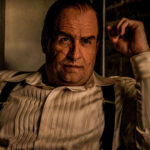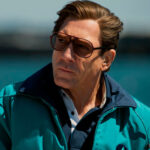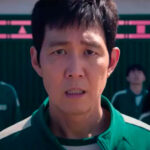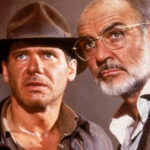

Since its debut in 1978, the iconic movie “Superman,” directed by Richard Donner, has captured the hearts and minds of generations of fans around the world. With Christopher Reeve embodying the legendary hero, the film not only set a standard for comic book adaptations in cinema but also left a lasting legacy in pop culture. Behind the scenes, there’s a fascinating array of trivia that helps to understand the magic behind the creation of this cinematic classic. From production challenges to creative choices, the stories surrounding the making of “Superman” offer a captivating glimpse into the backstage of one of the most beloved films of all time.
1 – STEVEN SPIELBERG ALMOST DIRECTED SUPERMAN
Steven Spielberg was offered the opportunity to direct the film; however, the producers rejected the salary he requested, opting to observe the performance of his previous production, “Jaws” (1975), at the box office. “Jaws” grossed $470 million in 1975, a remarkable feat for the time. To put it into context, in 2019, “Shazam!” reached $364 million despite the increase in the number of theaters, population, and ticket costs, including 3D technology. Thus, the producers failed to recognize Spielberg’s emerging talent’s potential. Unfortunately, Spielberg couldn’t entertain a new proposal as he was already committed to several other projects.
2 – MARLON BRANDO EARNED WAY MORE THAN CHRISTOPHER REEVE… AND EVEN SUED THE STUDIO
Marlon Brando was compensated with $3.7 million, along with a share of the gross profit, for his involvement in twelve days of shooting. This amount also included filming for a sequence that occurred simultaneously. Brando was not seen in the sequence due to a legal dispute with producer Ilya Salkind, alleging non-payment of his profit participation. Eventually, Brando received approximately $14 million for just ten minutes of screen time. The footage was later utilized in “Superman Returns” (2006), directed by Bryan Singer.
3 – MARLON BRANDO DIDN’T BOTHER TO MEMORIZE HIS LINES
Marlon Brando refused to memorize most of his lines in advance. In the scene where he places baby Kal-El in the escape pod, he was reading the lines from the baby’s diaper. He told director Richard Donner that the only way to maintain his natural performance was to record the first time he read the lines.
4 – HITTING THE GYM HARD
To attain the physique necessary to convincingly portray the role, Christopher Reeve underwent an intense regimen and bodybuilding work supervised by David Prowse, the man who portrayed Darth Vader in the “Star Wars” saga. He gained nearly thirty kilograms of muscle between pre-production and filming.
5 – SINGING? BETTER NOT
Margot Kidder was originally supposed to sing the song “Can You Read My Mind” for the flying sequence with Superman, but Richard Donner didn’t like the sound of the actress singing and changed it to narration.
6 – THE HELICOPTER SCENE
The scene involving the helicopter was scheduled to be filmed at the Pan Am airline building. The location had a helipad on its rooftop, used to transport passengers to JFK Airport. However, on May 16, 1977, the helipad was closed after a tragic incident: a helicopter attempted to land on the platform but ended up flipping over, resulting in the deaths of four people and a pedestrian who was hit when the aircraft crashed onto the street.
7 – DIRECTOR STRUGGLED TO HANDLE FILMING TWO SUPERMAN MOVIES AT ONCE
In 1977, filmmaker Richard Donner chose to simultaneously shoot two parts of the Superman saga. With nearly 80% of Superman II already completed, and facing the postponement of the original release date of Superman (scheduled for the summer of 1978) due to the extended filming, work on Superman II was halted in October 1978. This allowed Donner to prioritize the completion of the first film.
Following the release of Superman in December 1978, the production of the sequel, also to be directed by Donner, was planned. However, various commitments led to his replacement. One of the crucial issues was the producers’ announcement (Alexander and Ilya Salkind) that Marlon Brando’s scenes in Superman II would be cut to avoid the additional payment of 11.75% of the salary he would be entitled to for his participation in the sequel. Donner stated that he would only make the film if it were done according to his vision; otherwise, he preferred not to be involved in the project.
Tensions between the Salkinds and Richard Donner arose during the nearly 19 months of filming needed to complete Superman and much of Superman II. The producers blamed the director for budget overruns and exceeding the film delivery deadline. Donner, on the other hand, argued that he was never provided with a clear budget or a defined delivery deadline. The impasse reached its peak on March 15, 1979, when the Salkinds decided to replace Donner with the London director Richard Lester, known for directing the successful films “The Three Musketeers.”
8 – SUPERMAN NEVER LIES?
In the scene where Lois Lane interviews Superman on the balcony, the hero replied, “I never lie.” Producer Ilya Salkind considered this moment crucial in the film because it highlighted Superman’s dilemma, living under the fictional identity of Clark Kent and needing to keep the secret of his true nature, even while denying being Superman.
9 – WAS SYLVESTER STALLONE GOING TO BE SUPERMAN?
After the massive success of “Rocky” (1976), Sylvester Stallone fought to land the role of Clark Kent but was ultimately rejected, deemed “too Italian” for the part. Stallone discovered that Marlon Brando, who had casting influence, had vetoed his selection, similar to how he had vetoed Burt Reynolds for the role of Sonny in “The Godfather” (1972). Stallone then appeared on Merv Griffin’s talk show and criticized Brando, stating that he had no respect for the actor’s talent or the man he was. Ironically, in his review of “Rocky” (1976), Roger Ebert likened Stallone to “a next Marlon Brando.”
10 – ACTOR WHO PLAYED BABY JOR-EL SUFFERED BULLYING AND DIED YOUNG
At just seven months old, Lee Quigley acted alongside renowned cinema artists, playing the role of Marlon Brando’s (Jor-El) and Susannah York’s (Lara) son. He portrayed the baby sent in a spacecraft toward Earth before the destruction of Krypton. However, unlike the spacecraft, his career did not take off.
As time went by, Lee attended Bishop Bell CE School, where his problematic behavior frequently landed him in the principal’s office. At school, he was also the target of bullying, enduring assaults from classmates who wanted to test if he was truly “Superman.” These experiences left him as a depressed and resentful teenager, leading him to experiment with substances like drugs and alcohol. Unfortunately, Lee Quigley developed a dependency on inhaling glue and solvents. In March 1991, he tragically passed away at the age of 14, falling victim to an accidental overdose caused by a mixture of solvents he prepared himself.
“Superman” from 1978 is a film filled with fascinating trivia that not only illustrates the challenges of filmmaking but also the lives of its talented individuals involved. From the technical feats used to create groundbreaking special effects to the stories behind the memorable performances, every aspect of the film is imbued with an aura of magic and admiration. By delving into these curiosities, we are transported to a world where imagination becomes reality and where the legacy of the Man of Steel continues to inspire generations.








